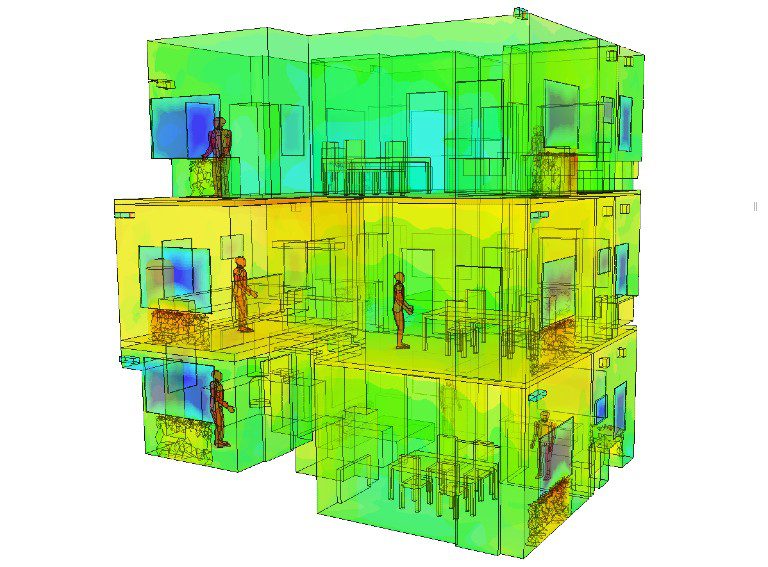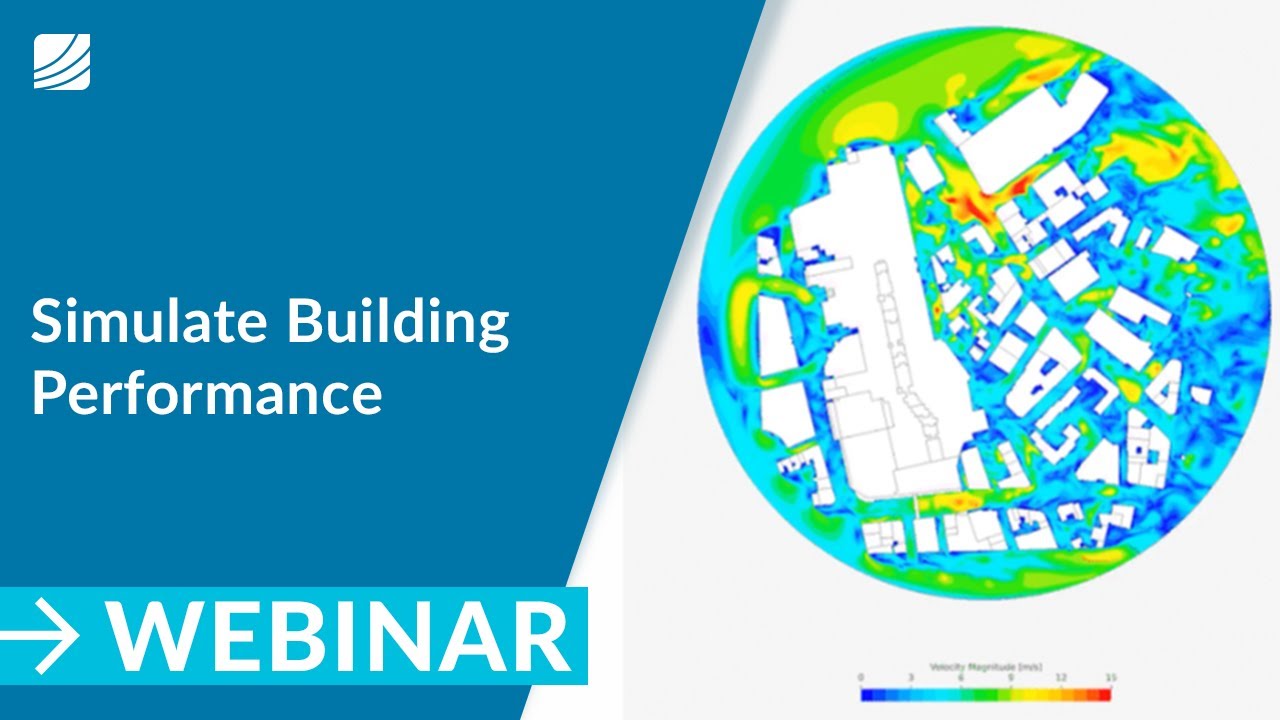Building Performance Simulation - An Essential Tool For Sustainable Design
Building performance simulation is a process that involves using computer models to predict how a building will perform in terms of energy usage, indoor environmental quality, and other factors.
Author:George EvansMar 11, 2023112.3K Shares1.6M Views

Building performance simulationis a process that involves using computer models to predict how a building will perform in terms of energy usage, indoor environmental quality, and other factors.
By simulating a building's performance, designers and engineers can optimize its performance and identify potential issues before construction even begins.
In this way, building performance simulation is an important tool for creating high-performing, sustainable buildings.
Importance Of Building Performance Simulation
Building performance simulation plays a crucial role in evaluating the energy efficiency and environmental impact of buildings. Here are some of the important aspects of building performance simulation:
- Energy Efficiency- Building performance simulation helps in identifying the areas where energy efficiency can be improved. It analyzes various building parameters such as heating and cooling loads, lighting, ventilation, and thermal insulation, and suggests ways to optimize them.
- Sustainability- By simulating a building's performance over its lifetime, building performance simulation can help in assessing its environmental impact. This includes the building's carbon footprint, water consumption, and waste management.
- Cost-Effectiveness- Building performance simulation can help in identifying cost-effective solutions for energy efficiency, which can help building owners save money on energy bills in the long run.
- Compliance- Building performance simulation is often required by building codes and regulations to ensure that buildings meet certain energy efficiency and environmental standards.
- Optimization- Building performance simulation can help in optimizing the performance of building systems, such as HVAC and lighting, by simulating different scenarios and analyzing the results to find the most efficient and effective solutions.
Overall, building performance simulation is a valuable tool for architects, engineers, and building owners to evaluate the performance and sustainability of buildings and to identify opportunities for improvement.
Types Of Building Performance Simulation
Building performance simulation is an important tool for evaluating the energy efficiency and environmental impact of buildings.
There are different types of building performance simulation techniques that can be used to model and analyze various aspects of building performance. Some of the most common types of building performance simulation are:
Energy Simulation
This type of simulation is used to evaluate the energy consumption of a building, including the heating, cooling, lighting, and other systems. Energy simulation can help to identify areas of energy waste and inform design decisions that can improve energy efficiency.
Daylighting Simulation
Daylighting simulation is used to evaluate the natural lighting in a building and can help to optimize the use of daylight to reduce energy consumption and improve occupant comfort.
Thermal Comfort Simulation
Thermal comfort simulation is used to evaluate the thermal comfort of occupants in a building and can help to optimize the design of heating and cooling systems to improve occupant comfort while reducing energy consumption.
Indoor Air Quality Simulation
Indoor air quality simulation is used to evaluate the air quality in a building and can help to identify potential sources of indoor air pollution and improve the health and comfort of building occupants.
Life Cycle Assessment
Life cycle assessment is a comprehensive analysis of the environmental impact of a building over its entire life cycle, from construction to operation to disposal.
This type of simulation can help to identify opportunities to reduce the environmental impact of a building and inform sustainable design decisions.
Building Performance Simulation Tools
Building performance simulation tools are computer programs that enable architects, engineers, and building professionals to simulate the performance of a building.
These tools provide detailed insights into the energy consumption, thermal comfort, indoor air quality, and other aspects of a building's performance.
Here are some of the most commonly used building performance simulation tools:
EnergyPlus
EnergyPlus is a building energy simulation program that models the building's energy use, thermal performance, and HVAC systems. It is a free, open-source software developed by the U.S. Department of Energy.
IESVE
Integrated Environmental Solutions Virtual Environment (IESVE) is a comprehensive building performance simulation software that allows users to evaluate the energy performance, carbon emissions, and thermal comfort of a building.
DesignBuilder
DesignBuilder is a building performance simulation software that allows users to model and simulate the energy performance and environmental conditions of buildings. It is widely used for energy analysis, daylighting, and natural ventilation studies.
EQUEST
eQUEST is a building energy simulation software that enables users to model and simulate the energy consumption of buildings. It is widely used for energy modeling, energy auditing, and code compliance.
OpenStudio
OpenStudio is an open-source building performance simulation software that enables users to model and simulate the energy consumption, thermal performance, and HVAC systems of buildings.
TRNSYS
TRNSYS is a simulation software package that allows users to model and simulate the performance of renewable energy systems, HVAC systems, and building energy use.
COMFEN
COMFEN is a software tool developed by Lawrence Berkeley National Laboratory that enables users to model and simulate the energy performance and daylighting of fenestration systems.
These tools are essential for architects, engineers, and building professionals to design high-performance buildings that are energy-efficient, comfortable, and healthy.

Simulate Building Performance
Building Performance Simulation Process
Building performance simulation is a crucial part of building design, construction, and operation. It is a process that involves modeling a building's energy consumption, environmental impact, and indoor environmental quality.
The simulation allows building professionals to optimize the building's performance and identify potential issues before construction. Here is an overview of the building performance simulation process:
- Establishing Project Goals- The building performance simulation process starts with establishing project goals. The goals could be reducing energy consumption, optimizing indoor environmental quality, or reducing carbon emissions.
- Developing Building Model - The next step is to develop a building model using a building performance simulation tool. The tool uses building geometry, material properties, and weather data to create a virtual building model.
- Input Data- The building model requires input data such as HVAC systems, lighting systems, and occupancy schedules to simulate the building's performance accurately.
- Running Simulation- Once the building model and input data are complete, the simulation can be run. The simulation generates results such as energy consumption, carbon emissions, and indoor environmental quality metrics.
- Analyzing Results- The simulation results are analyzed to identify potential issues and areas for optimization.
- Optimizing Design- Based on the simulation results, building professionals can optimize the building design by changing materials, systems, or building orientation.
- Repeating the Process- The building performance simulation process is iterative, and it may be necessary to repeat steps 2-6 to achieve the desired project goals.
Building performance simulation allows building professionals to make informed decisions about the building's design and operation. It is an essential tool in creating sustainable and high-performance buildings.
Applications Of Building Performance Simulation
Building performance simulation has various applications in the field of architecture, engineering, and construction. Some of the key applications of building performance simulation are:
Energy Efficiency Analysis
Building performance simulation can be used to evaluate the energy efficiency of a building and identify areas where improvements can be made. This can help architects and engineers to design more energy-efficient buildings that consume less energy and reduce operating costs.
Indoor Comfort Analysis
Building performance simulation can also be used to evaluate the indoor comfort of a building. This can help architects and engineers to design buildings that provide optimal indoor comfort for occupants, including temperature, humidity, and air quality.
Sustainability Analysis
Building performance simulation can be used to evaluate the sustainability of a building. This can help architects and engineers to design buildings that are environmentally friendly and reduce their impact on the environment.
Structural Analysis
Building performance simulation can also be used to evaluate the structural performance of a building. This can help architects and engineers to design buildings that are safe and can withstand various types of environmental loads.
Fire Safety Analysis
Building performance simulation can be used to evaluate the fire safety of a building. This can help architects and engineers to design buildings that are safe from fire hazards and meet the required fire safety standards.
Overall, building performance simulation is a critical tool in the design and construction process, helping architects and engineers to create more sustainable, comfortable, and safe buildings.
People Also Ask
How Does Building Performance Simulation Work?
Building performance simulation involves creating a digital model of a building and using computer software to simulate its performance in terms of energy use, thermal comfort, and indoor air quality.
The software uses inputs such as climate data, building materials, and mechanical systems to create a virtual model of the building and calculate its energy consumption and other performance metrics.
What Are The Benefits Of Building Performance Simulation?
Building performance simulation can help architects and engineers design buildings that are more energy-efficient, comfortable, and healthy for occupants.
By simulating different design options and scenarios, designers can optimize the building's performance and reduce the risk of costly design mistakes or performance issues.
What Types Of Buildings Can Benefit From Building Performance Simulation?
Building performance simulation can be used for any type of building, from single-family homes to large commercial buildings.
It is particularly useful for complex buildings with specialized mechanical systems, such as hospitals, laboratories, and data centers.
What Software Is Used For Building Performance Simulation?
There are many software programs available for building performance simulation, including EnergyPlus, DesignBuilder, and IES VE. Each program has its own strengths and weaknesses, and the choice of software often depends on the specific needs of the project.
How Accurate Are Building Performance Simulations?
Building performance simulations can be very accurate if the input data is accurate and the simulation is conducted by experienced professionals.
However, there are many factors that can affect the accuracy of the simulation, such as assumptions made about occupant behavior and weather data.
It is important to use realistic input data and validate the simulation results with real-world performance data.
Final Words
Building performance simulation is an essential tool in designing energy-efficient buildings and assessing their environmental impact.
It enables designers to analyze and optimize a building's performance, including its energy consumption, indoor environmental quality, and carbon footprint, among other aspects.
By utilizing various simulation techniques and software tools, designers can make informed decisions about building design, resulting in more sustainable, comfortable, and cost-effective buildings.
The growing demand for green buildings and the need to comply with building codes and regulations will continue to drive the adoption of building performance simulation in the architecture and construction industry.

George Evans
Author
George Anderson, an exceptional architectural designer, envisions and brings to life structures that transcend the realm of imagination. With an unwavering passion for design and an innate eye for detail, George seamlessly blends form and function, creating immersive spaces that inspire awe.
Driven by a deep appreciation for the interplay of space, light, and materials, George's innovative approach redefines the possibilities of architectural design. His visionary compositions leave an indelible mark, evoking a sense of wonder and transforming the built environment.
George Anderson's transformative designs and unwavering dedication continue to shape the architectural landscape, pushing the boundaries of what is possible and inspiring generations to come.
Latest Articles
Popular Articles